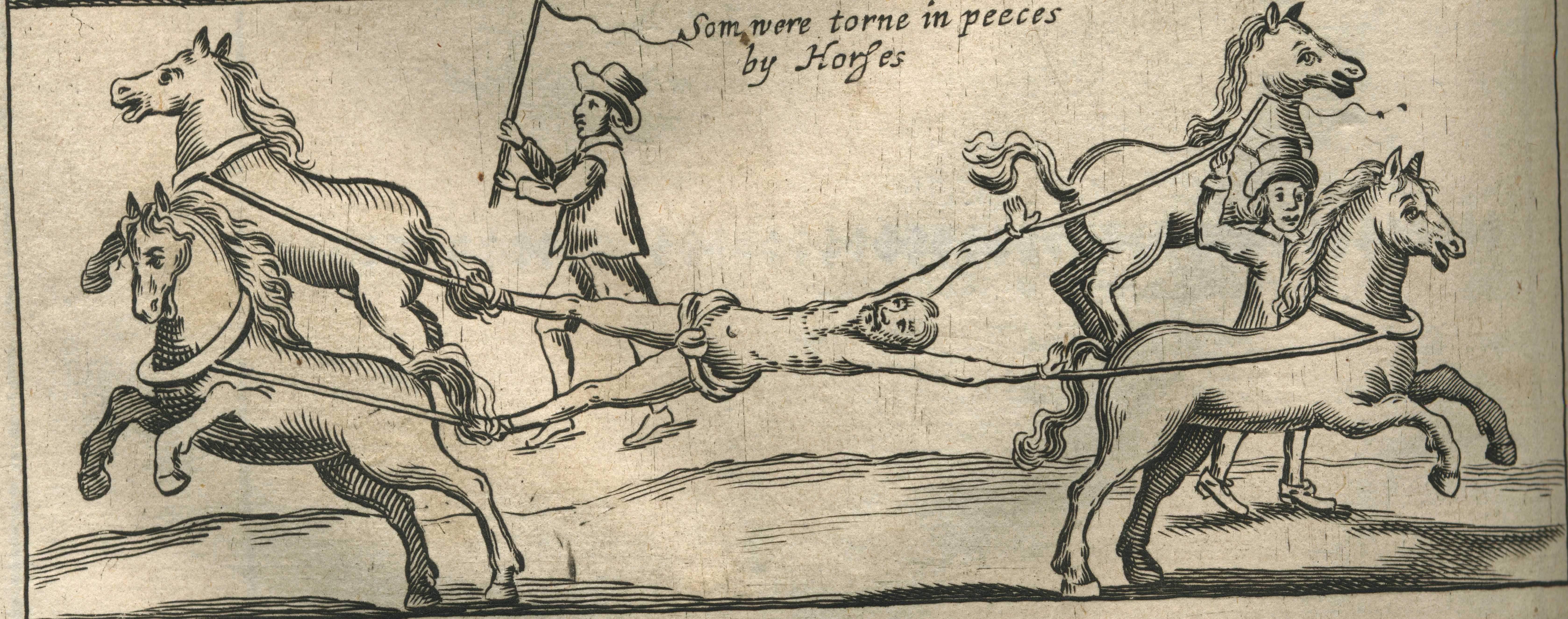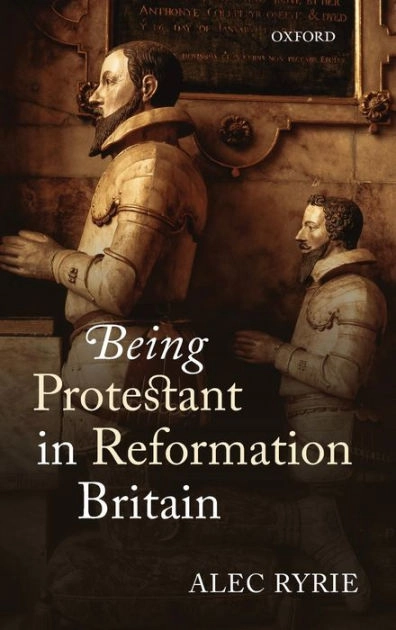I am currently reading Alec Ryrie’s Being Protestant in Reformation Britain (Oxford University Press, 2013), which is one of the best books on the Reformation in Britain to come out this year, and perhaps this decade.
Ryrie’s book aims to answer in relation to the early modern Protestant the question the little boy at the zoo asked of the rhinoceros: ‘But what does he do all day?’ (p. 2, citing Patrick Collinson, ‘Shepherds, Sheepdogs and Hirelings’, in Shiels and Wood, eds, The Ministry: Clerical and Lay (1989). Among other things I like about the book is the extent to which he stresses the relevance of medieval and contemporary Catholic influences on mainstream British life, a topic I have worked on in some detail (click here for details). Ryrie’s insightful comments on attitudes towards suffering are just one strand of what he has to say, most of which is not directly related to the theme of suffering, but what he does say on the subject is fascinating.
Ryrie devotes an entire chapter (chapter 2) to ‘Despair and
Salvation’ (pp. 27-48), beginning with a section entitled ‘A Culture of
Despair’, in which he speaks of the ‘anguished desolation’ of people like Nehemiah Wallington, whose traumas ‘have become symbolic of Protestantism’s self-destructive emotional life’ (p. 27). Naturally enough, Ryrie identifies the roots of this kind of despair in ‘the Calvinist doctrine of predestination’; ‘by the early 17th century large numbers of Protestants were certainly haunted by the fear that they might be irrecoverably damned, and many were – at least sometimes – absolutely convinced that they were’ (p. 28).
He then goes on to make the point that ‘mental illness in general, and depression in particular, was a part of the early modern social
landscape’ (p. 28), though, curiously, he makes no mention of Robert Burton’s Anatomy of Melancholy, either here or elsewhere (one can’t have everything!). He explores the relationship between salvation-anxiety and depression, and, while warning of the ‘danger of exaggerating Calvinism’s tendency to foment despair’ (p. 29), concedes that ‘Calvinism could be a theology of despair’ (p. 30), and was, perhaps, even ‘a routine part of the Protestant experience’ (p. 31).
At this point, Ryrie switches his focus from predestination to the Devil and Hell as being a major cause of early modern Protestant angst. He points to the popularity among Protestants of the Catholic Robert Persons’ Book of Resolution, whose ‘most striking feature…is its vivid, terrifying chapter on Hell’ (p. 34), and notes the popularity of this theme in other texts. True conversion was predicated upon ‘the absolute necessity of fear’ (p. 36).
The final section of this chapter deals with the extent to which Protestants found solace and comfort in emotions and deep feelings; ‘Feelings…could provide unparalleled evidence…of salvation and of election’ (p. 41). This is all very well, but what were God-fearing Protestants to do if they could not feel, if their hearts were cold and unresponsive? This brings us full circle; ‘if your troubled feelings were not balanced by a periodic sense of assurance, while people around you spoke blithely of the inner sweetness which the Spirit had granted them – then despair could return with a vengeance’ (p. 46).
Ryrie returns to this topic in the following chapter, on ‘The Meaning of Mourning’ (pp. 49-62). ‘Dullness and despair on one side, sweetness and assurance on the other; these are the key coordinates for an emotional map of early modern Protestantism’ (p. 49). To steer their course between these coordinates, Protestants poured phenomenal amounts of energy into ‘examining, and condemning, themselves for their innumerable sins. It changed
the language: the word “mourning” came to apply primarily to bewailing your own sins, and only secondarily to lamenting the dead’ (p. 50).
All are sinners, then, but ‘The godless sinner “hath a merry heart”, while the godly sinner “is greeued and confounded in himself”’ (p. 56, citing Arthur Dent, The Plaine Mans Path-Way to Heaven, 1607).
Ryrie does not explicitly explore the question of how this grieving at one’s sins sits alongside the injunction to ‘rejoice to suffer’, though
he touches on the latter subject later on in the book, citing Francis Rous, ‘Love delights in doing and suffering; yea it is angry when it may not be suffered to suffer’ (p. 242, citing Rous, Mystical
Marriage, 1631). He mainly associates ‘This strange dance with suffering’ with temptation; ’The Lord’s Prayer unambiguously asks not to be led into this, but the logic of the Protestant view of afflictions led in the opposite direction’. Unlike Catholics, Protestants ‘did not search out affliction’, but they nevertheless ‘watched anxiously to see whether affliction had searched
[them] out’ (p. 242), and the idea that ‘suffering is a proof of God’s favour’ was ‘a core Protestant conception of the Christian life’ (p. 243).
Ryrie’s observations chime so closely with my own that I am bound to agree substantially with the picture he paints. If there is anything I would take issue with it is with the presentation of the Protestant mindset as largely static, whereas my own work (as anyone who has been following my blog will be aware) traces substantial changes over the course of the seventeenth century. There is, in fact, ample evidence of a shift of perspective, leading to what van Dijkhuizen calls ‘a watershed moment in…the history of pain’ (Jan Frans van Dijkhuizen, ‘Religious Meanings of Pain in Early Modern England’, in Dijkhuizen and Karl A.E. Enenkel, eds, _The Sense of Suffering: Constructions of Physical Pain in Early Modern Culture_, Brill, 2009, pp. 189–219; p. 190).
I have one or two other lesser criticisms. I would agree with Melissa Sanchez, Erotic Subjects (among others) that the martyrdom of Protestants during the Marian period remained a potent symbol of the fervour for suffering to which the pious ought to aspire, and I don’t think Ryrie gives sufficient weight to this. He also refers surprisingly infrequently to Bunyan, whose Grace Abounding to the Chief of Sinners (1666) gives an extraordinarily detailed account of the mental torments that the faithful were prone to suffer in those days.
Overall, though, these are fairly minor points; suffering is not Ryrie’s main focus, and he succeeds pretty well in his broader aim of showing what the early modern Protestant did all day.



Comments